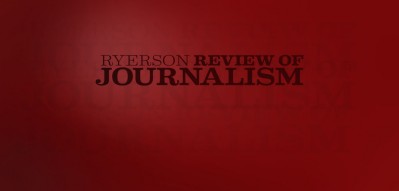As this decade began, the trend watchers in the media predicted that it would bring a return to traditional moral values: the unscrupulous eighties would give way to the ethical nineties. Though I hate to give them credit-why does every 10-year period have to be tied up in a fashionable package and labeled like a designer fragrance – there are already signs that the soothsayers were right. From the political correctness scare to the peep shows into politicians’ lives, the North American media have lately been very busy highlighting ethical questions. The Clarence Thomas/Anita Hill hearings and the William Kennedy Smith rape trial raised similar issues-both in themselves and in the way they were covered. In America, where the media no longer hesitate to take shots at each other, the battle lines are being drawn across the country. In Canada, however, we’re still rather reserved about bashing our own kind. As Marlene Fine discovered in “Dubious Distinction” on page 52, many of our newspapers believe in the glass-house effect; they aren’t about to cast the first stone. Her story explores the controversy surrounding an exhaustive profile of Marc Lepine, which won two of the nation’s highest press awards. When it was discovered that the authors, two Ottawa Citizen reporters, had lifted three unattributed passages from other newspapers, some journalists called for the awards to be repealed. Others shrugged the whole thing off as common practice. Either way, the debate was largely a private one; what was published at all was cloaked in the neutrality of news stories.
In keeping with the nineties trend, most of the other stories in this issue of the Review also deal with ethics. However, we’re not neatly as concerned with being au courant as we are with keeping a close eye on what the industry is up to. Journalists have a role in society that’s too important to be performed without scrutiny. Yet, for the most part, the media aren’t obliged to answer to anybody for their actions. The federal broadcast regulator is notoriously weak-willed and newspaper press councils have no real punitive power. As for magazines, only the consciences of their editors-and a few enlightened publishers-keep them on the ethical up-and-up. As I found out for “Horning In” on page 32, no organization exists to police periodicals, especially those that get too cozy with advertisers.
Though our cover story is mainly concerned with the way good writers are fettered at Maclean’s, it too has an ethical side: the staff of the magazine is deeply troubled about the sexist way that women are depicted in its pages. And in that most sexist of newspaper enclaves, the sports departments, a bunch of the guys have decided that Globe and Mail columnist Marty York is completely off-base. As Anthony Seow reports on page 26, they question his reporting on the grounds that it’s-what else?-unethical.
What you see in these pages is only a sampling of the moral quandries we heard about this year. In preparing the issue, we were flooded with neatly 50 story ideas and reports on what’s wrong with the journalism industry. But at least it’s a start. When we begin to uncover-and debate publicly-what ails the industry, we can begin to cure it. Journalist, heal thyself.
So that’s our mandate: to be the watchdog, the self-scrutinizing element that’s largely missing in the Canadian media. And that’s what we’ve done since the first issue of the Ryerson Review of Journalism rolled off the presses in 1984. Even before ethics became trendy.
About the author
Sandra E. Martin was the Editor for the Summer 1992 issue of the Ryerson Review of Journalism.
